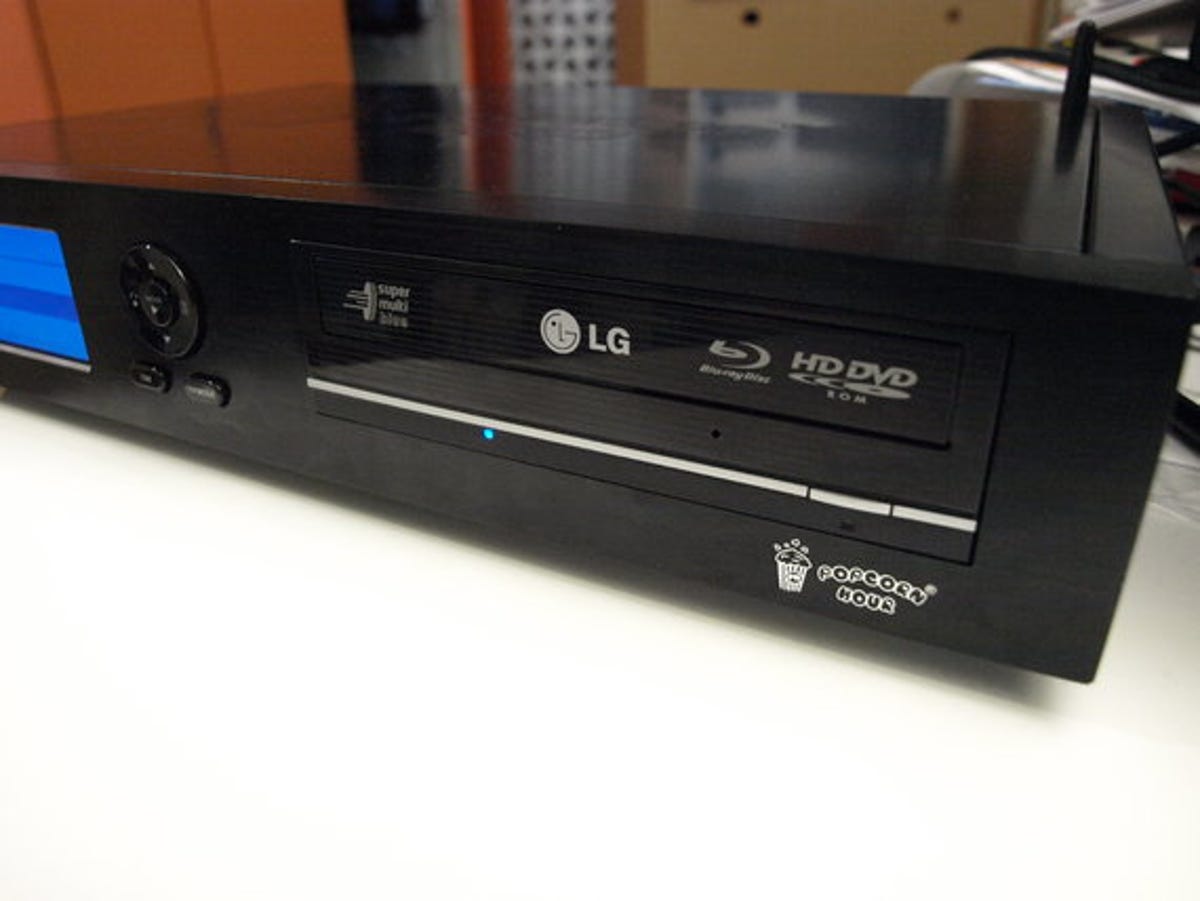Popcorn Hour C-200: Adding a Blu-ray drive
We love the Popcorn Hour and the new C-200 has the option to accept a Blu-ray drive -- a very smart piece of set-top box convergence. Here's how you plug one in

Our review of the Popcorn Hour C-200 is now live, but because of some production delays, our C-200 review sample didn't come with a Blu-ray drive, or a hard disk. As such, we weren't able to test the former in our review, and had to strip down a laptop to get a 2.5-inch drive to use the latter. The good news is that, thanks to LG, we now have a Blu-ray drive to test with the C-200 and we thought we'd show you how to plug it in.
Fitting the drive shouldn't be a problem if you've ever done any work on your home PC before. Our photos give you an idea of what to do, but you'll need to check the instructions to figure it out. If you're fitting both a 2.5-inch hard drive and a Blu-ray reader you'll probably have your system up and running in around 15 minutes. The hardest part of the whole thing is making the Blu-ray drive sit flush with the outside of the Popcorn Hour.
We were slightly worried that allowing users to fit their own Blu-ray drives would result in all sorts of problems and a really ugly machine. Aesthetically though, we're happy with the way the LG drive sits with the Popcorn Hour. It looks like a compact Windows-based home-cinema PC, which isn't a bad look at all and won't distract from most setups.
We do still have some reservations about user-fitted Blu-ray drives though. If you're planning to do this, please check the Popcorn Hour compatibility wiki first. You can't use just any Blu-ray reader, because not all of them work properly. In an ideal world, the C-200 would ship with a drive included -- after all, surely people buying this machine are doing so for the Blu-ray compatibility, or they would simply buy the excellent A-110 model.
Having spent some time testing the Blu-ray performance, we have to say, we're very impressed. Loading discs is fast and painless. The quality seems every bit as good as most stand-alone Blu-ray players on the market. We're a little dubious about the sound in some cases though -- this probably isn't the product for you unless you're using an external AV receiver. We do hope this will improve as time goes on though, and at the moment it is at least usable, if not perfect.
We should point out that although the drive LG sent us to use in this
device supports HD DVD, the Popcorn Hour doesn't. That's rather sad,
because it would have been helpful to offer a little backwards
compatibility for people (all four of them) with HD DVD collections.
Even so, DVD playback is possible, and you'll also be able to listen to
audio CDs at some point in the future, via a firmware upgrade.
We'll be using the C-200 extensively over the next few weeks, so expect a long-term test from us in the coming months.